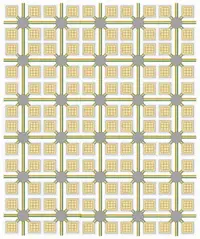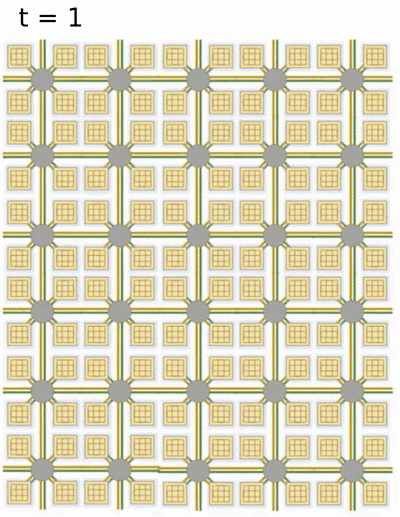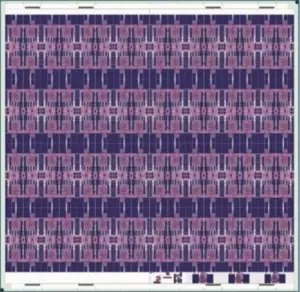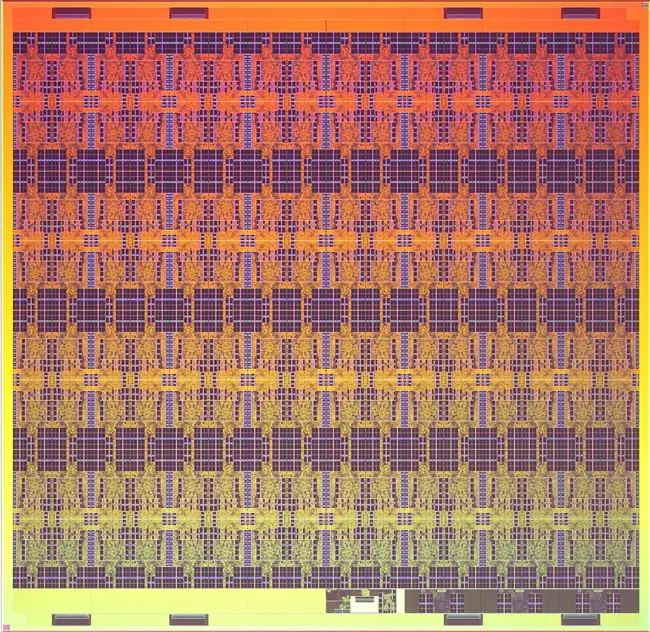(→architecture) |
(→architecture) |
||
| Line 28: | Line 28: | ||
There are 128 neuromorphic cores, each containing a "learning engine" that can be programmed to adopt to the network parameters during operation such as the spike timings and their impact. This makes the chip more flexible as it allows various paradigms such as supervisor/non-supervisor and reinforcing/reconfigurablity without requiring any particular approach. The choice for higher flexibility is intentional in order to defer various architectural decisions that could be detrimental to research. | There are 128 neuromorphic cores, each containing a "learning engine" that can be programmed to adopt to the network parameters during operation such as the spike timings and their impact. This makes the chip more flexible as it allows various paradigms such as supervisor/non-supervisor and reinforcing/reconfigurablity without requiring any particular approach. The choice for higher flexibility is intentional in order to defer various architectural decisions that could be detrimental to research. | ||
| + | ==== Neural Unit ==== | ||
| + | Loihi implements a variant of the [[current-based synapse]] (CUBA) [[leaky integrate-and-fire neuron]] model with two internal state variables: | ||
| + | |||
| + | * Synaptic response current <math>u_i(t)</math> - the weighted sum of the input spikes and a constant bias | ||
| + | * Membrane potential <math>v_t(t)</math> - a leaky (i.e. weakens over time) spike potential function that sends out a spike when the potential passes the firing threshold | ||
| + | |||
| + | It's worth noting that since Loihi is a digital architecture, the above continuous functions are approximated using discrete a timestep whereby all neurons maintain a timestemp synchronized throughout the entire chip. This is needed in order to enable well-defined behaviors. | ||
:[[File:loihi spikes.gif|400px]] | :[[File:loihi spikes.gif|400px]] | ||
Revision as of 23:41, 1 March 2018
| Edit Values | |
| Loihi | |
| General Info | |
| Designer | Intel |
| Manufacturer | Intel |
| Market | Artificial Intelligence |
| Introduction | September 25, 2017 (announced) January, 2018 (launched) |
| Shop | Amazon |
| Microarchitecture | |
| Process | 14 nm |
| Transistors | 2,070,000,000 |
| Technology | CMOS |
| Die | 60 mm² |
| Vcore | 0.50 V-1.25 V |
Loihi (pronounced low-ee-hee) is a neuromorphic research test chip designed by Intel Labs that uses a asynchronous spiking neural network (SNN) to implement adaptive self-modifying event-driven fine-grained parallel computations used to implement learning and inference with high efficiency. The chip is a 128-neuromorphic cores many-core IC fabricated on Intel's 14 nm process.
The chip is named after the Loihi as a play-on-words - Loihi is an emerging Hawaiian submarine volcano that is set to surface one day.
Overview
Announced in September 2017, Loihi is predominantly a research chip meaning performance characteristics are not guaranteed. Loihi consists of a asynchronous spiking neural network (SNN) meaning instead of manipulating signals, the chip sends spikes along activate synapses. Connections are asynchronous and highly timed based. Neuromorphic cores containing many neurons are interlinked and receive spikes from elsewhere in the network. When received spikes accumulate for a certain period of time and reach a set threshold, the core will fire off its own spikes to its connected neurons. Preceding spikes reinforce each other and the neuron connections while spikes that follows will inhibit the connection, declining the connectivity until all activities are halted.
architecture
The chip itself implements of a fully asynchronous many-core mesh of 128 neuromorphic cores. It implements a spiking neural network (SNN) whereby at any given time one or more of the implemented neurons may send out an impulse (i.e., spike) to its neighbors though the directed links (synapses). All neurons have a local state with their own set of rules that affects their evolution and the timing of spike generation. Interaction is entirely asynchronous, sporadic, and independent of any other neuron on the network.
There are 128 neuromorphic cores, each containing a "learning engine" that can be programmed to adopt to the network parameters during operation such as the spike timings and their impact. This makes the chip more flexible as it allows various paradigms such as supervisor/non-supervisor and reinforcing/reconfigurablity without requiring any particular approach. The choice for higher flexibility is intentional in order to defer various architectural decisions that could be detrimental to research.
Neural Unit
Loihi implements a variant of the current-based synapse (CUBA) leaky integrate-and-fire neuron model with two internal state variables:
- Synaptic response current - the weighted sum of the input spikes and a constant bias
- Membrane potential - a leaky (i.e. weakens over time) spike potential function that sends out a spike when the potential passes the firing threshold
It's worth noting that since Loihi is a digital architecture, the above continuous functions are approximated using discrete a timestep whereby all neurons maintain a timestemp synchronized throughout the entire chip. This is needed in order to enable well-defined behaviors.
The chip was initially tested and simulated using FPGAs. Actual silicon implementations arrived in late November. Loihi is fabricated on Intel's 14 nm process and has a total of 130,000 artificial neurons and 130 million synapses. In addition to the 128 neuromorphic cores, there are 3 managing Lakemont cores.
Die
- 14 nm process
- 2,070,000,000 transistors
- 128 neuromorphic cores + 3 x86 cores
- 60 mm² die size
References
- Jim Held, Intel Fellow & Director Emerging Technologies Research, Intel Labs, HPC Developer Conference 2017 ("Leading The Evolution of Compute: Neuromorphic and Quantum Computing").
See also
| back image | 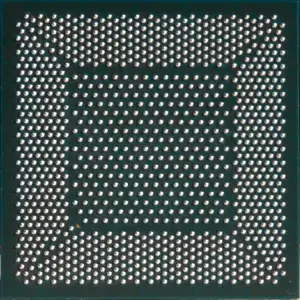 + + |
| core voltage (max) | 1.25 V (12.5 dV, 125 cV, 1,250 mV) + |
| core voltage (min) | 0.5 V (5 dV, 50 cV, 500 mV) + |
| designer | Intel + |
| die area | 60 mm² (0.093 in², 0.6 cm², 60,000,000 µm²) + |
| first announced | September 25, 2017 + |
| first launched | January 2018 + |
| full page name | intel/loihi + |
| instance of | neuromorphic chip + |
| ldate | January 2018 + |
| main image | 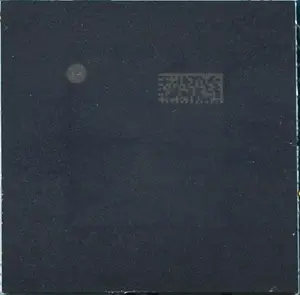 + + |
| manufacturer | Intel + |
| market segment | Artificial Intelligence + |
| max cpu count | 16,384 + |
| name | Loihi + |
| neuron count | 131,072 + |
| process | 14 nm (0.014 μm, 1.4e-5 mm) + |
| smp max ways | 16,384 + |
| synapse count | 130,000,000 + |
| technology | CMOS + |
| transistor count | 2,070,000,000 + |
